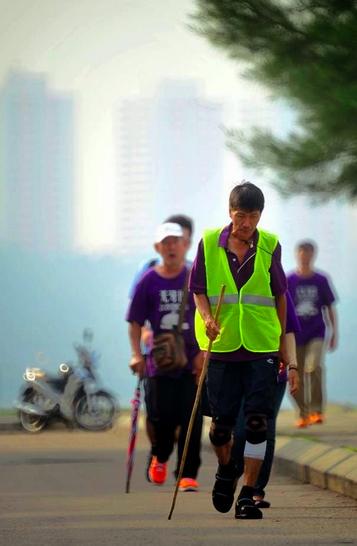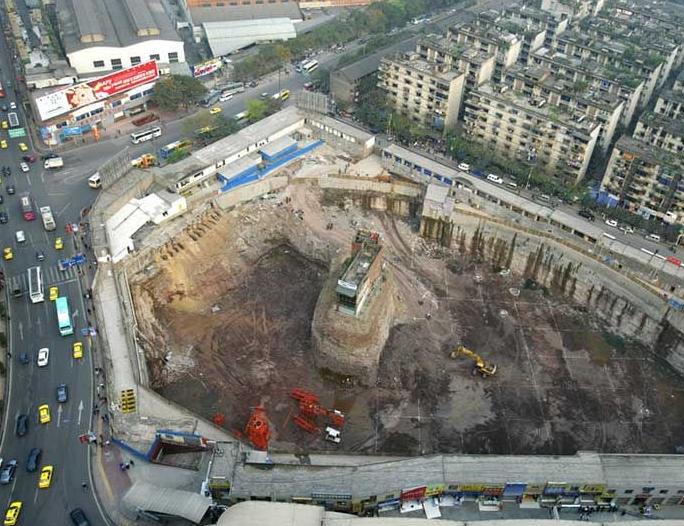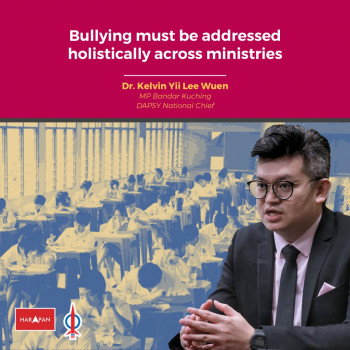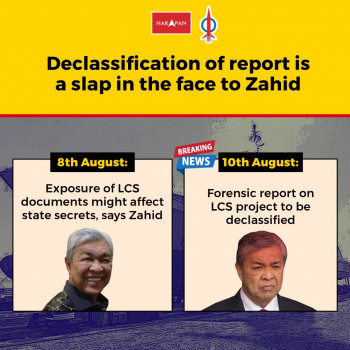By Hosanna Chung
What would compel a farmer to walk 500 km to defend his ancestral graves? Why would a couple refuse to move out from their home even after excavation left it balancing on a 10 metre high “ledge”? We explore the idea of whether individual rights should be sacrificed for the “greater good” in an era where public consultation is often bulldozed in favor of quickie development.
Recently several development projects have come under public scrutiny with local residents voicing out unhappiness that private developers did not consult them in the decision-making process. When locals are not involved in town-planning, we risk building cities that are less habitable, less liveable, and ultimately, less sustainable.
Since 2011, Kuantan, Gebeng locals mounted a nationwide campaign with public protests against the Lynas Advanced Materials Plant (LAMP) which they say will have adverse environmental consequences. The attention-grabbing campaign has forced the Prime Minister as well as the Australian company to respond to the high-profile issue, but it failed in its objective to shut down the plant.
Following protests by locals, a 2002 plan to build a mega-incinerator in Kampung Bohol, Puchong, was shelved during the era of Dr Mahathir’s premiership. When Abdullah Badawi came into power, the project was revived in 2006 with the site shifted to Broga. The project was scrapped before the court decided on a case brought by the residents to stop it.
Meanwhile last year, residents of Kepong, Jinjang were angered to hear that the incinerator site is now planned for Taman Beringin. While Najib’s government insists to build the project by 2016, the residents’ anti-incinerator fight is still ongoing.
2013 saw several cases of heritage vs development standoffs in which, eventually, history had to be sacrificed for modernity. In Kuala Lumpur, several historical Jalan Sultan pre-war shophouses were demolished to make way for the Mass Rapid Transit (MRT) project. In Mantin, Negeri Sembilan, the century-old Kampung Hakka village was not spared by a developer despite a short-lived court battle.
This year, Petaling Jaya residents have mounted an aggressive campaign objecting to the proposed KIDEX highway which will cut through their neighbourhood. “Say no to KIDEX” banners are seen strewn along the pathway of the proposed elevated highway in a mature township, hung by concerned residents. On May 16, a briefing by the highway developer had to be called off when angry residents said they were misled to think it was a “townhall” session.
In June, a fruit farmer from Pengerang, Johor (see Chua Peng Sian story) walked for 11 days to Parliament and KLCC to voice his unhappiness over the Petronas Refinery and Petrochemicals Integrated Development (RAPID) petrochemical project that will force his ancestor’s graves to relocate.
These protesters are not full time activists – they are mothers, students, retirees, blue-collar workers, people from all walks of life. They are not paid for their efforts and will obtain no reward.
What would make an ordinary citizens speak out and stand up on these issues? For some, the driving force is to protect the character of their neighbourhood. Others see it as an exercise of property rights which they are entitled to. For others, it is a cautionary tale against development that goes against the wishes of the people.
Whatever the objection may be, land rights has always been a thorny issue in developing nations with the constant tension between the economic value of development and balancing the less tangible interest of the local community including property rights, heritage and other considerations.
The value of consulting the public
Contrary to the lyrics of a popular song, we did not “build this city on rock and roll”. In an era of top-down urban planning, radical urban activist Jane Jacobs argued against zoning. She believed that city planning should focus on what a city is, instead of what it should be. This is incorporated in the idea that all city development must involve some form of public consultation.
Taking into account public opinion is an important step in the development process as cities should be built for the people who live in them, not just the developers or bureaucrats. Infrastructure aside, the unique character and life of cities are, of course, shaped by the people who live in them.
Penang Institute’s Wong Chin Huat explains that the importance of consultation in development goes beyond the democratic idea of public wisdom. Development, he says, should take into account social good.
“Fundamentally, we need to go back to the idea of ‘development for good’. For all development that takes place, those who live in the area need to be consulted. You need to get their free, prior and informed consent. That is important. Just like for the orang asli…
“Otherwise, everyone can say, why don’t you sacrifice for the greater good. But then, it’s not your own sacrifice. Of course it’s easy to sacrifice someone else, right? If you want to offer you own (property) to sacrifice, by all means. But you have no right to offer others’ (property),” Wong says.
The idea of ‘development for good’ goes hand in hand with public responsibility. While developing ‘for good’ is a lofty aim, the question to be asked is, whose ‘good’ is it for? The developer, the city planning authority, the politician and the local resident may have different ideas of what is ‘good’ use of a particular land space.
Given the unequal balance of power between the powerful State authority, the rich corporations, and the individual homeowners, the process of consultation becomes important to reach a ‘good’ decision. Wong believes that part of the reason why development is taking place without consultation is due to the structure of our government system.
“Local government is the most undemocratic part of our political system. If you look at this case (Pengerang), the relocation of the graves is under the jurisdiction of the local council. Imagine if Kota Tinggi (municipal council) had an elected government. Things would be different.
“They would have to care about the public backlash. In this case, they don’t have to. Because, what can you do? I can take away your (ancestral) graves, you cannot do anything…you cannot kick me out of my job.”
The local community as stakeholders should have a say in the way their neighbourhood is being developed. Likewise, the private sector plays an important role to develop projects that are economically feasible, while the local authorities’ task is to ensure that development complies with the relevant policies and plans.
This partnership is described in Agenda 21, an action plan developed by the Earth Summit -known as theUnited Nations Conference on Environment and Development (UNCED)- to provide guidelines for sustainable development.
Agenda 21 has been introduced in Malaysia in 2000 by the Ministry of Housing and Local Development via a program known as Local Agenda 21 (LA21). Four pilot sites for LA21 were – Krian (rural), Kuantan (town), Petaling Jaya (city) and Miri (East Malaysia). The program was declared a successful model of public participation and the ministry encouraged all local councils to adopt it.
However, lack of substantive information, cooperation and funding has hampered this effort. For the councils that have adopted it, has it shown any fruit? Many citizens are not aware of the LA21 project, local councils – even those who have adopted the program – may adhere to the project on paper, but in reality it is very much “business as usual”. With poor implementation of a good policy, local development has taken place bypassing it, thus defeating the purpose.
This is also a question of procedural justice. While the framework for public consultation exists, there are many areas to improve on. Many so-called “public consultation” processes are conducted in a non-friendly manner where resident are either not aware that it is being held, or unable to attend because it is held in at a time inconvenient for them.
If the residents are unable to attend the briefing, the authorities will use this as a loophole to say that they have ‘abdicated’ on their rights. It makes it more convenient for the developers to rush through the approval process without having to go through the tediousness of public consultation.
Borrowing a term from the law, should the burden of proof be on the public to show why they object to the project? Or should the developer bear the burden to prove that the project is feasible and will not be to residents’ detriment?
On the other hand, what about renters who have lived in an area for a long time, but do not own the property – should they also have a say in the area’s development? Certainly the government and private developers stand to gain more from the development revenue. Residents do not want to be shut out from the process, they want to play an active role in deciding the fate of their neighbourhoods.
Clearly, there is much tweaking to be done before our development processes are more transparent and allow greater public participation. The nitty-gritty process is messy, but citizen participation is a path that must be forged, a better way forward to curate and maintain cities that we want to live in, and our children too.
Land rights for all… including the poor and the dead!
 What if part of the land in a rich area in say, Kenny Hills, was acquired by the government to build affordable housing projects. Do you think the bungalow owners would keep quiet? But when poor communities’ land is acquired to make way for mega-projects, more often than not, the marginalised community will lose the fight.
What if part of the land in a rich area in say, Kenny Hills, was acquired by the government to build affordable housing projects. Do you think the bungalow owners would keep quiet? But when poor communities’ land is acquired to make way for mega-projects, more often than not, the marginalised community will lose the fight.
The poor have property rights too and should not be denied these freedoms in the name of the “common good” – a concept that can be misused by the government and corporations to oppress.
A mega project that looks good on paper may cause the local community to lose out. Particularly for marginalised communities which are vulnerable and often ill-equipped to voice out their rights or lack the awareness to do so.
“If you evict people out of the land, who provides them with their livelihood?” -Wong Chin Huat
In Pengerang, 28,000 residents across 17 population centres are set to be evicted to make way for the RM35 billion RAPID project which spans a massive 22,500 acres. Residents are dissatisfied with compensation deals offered by the Kota Tinggi Land Office as low as RM2.80 per sq ft, where independant land valuers have priced the land at RM12 to RM15 per sq ft.
While the owners of the Pengerang Integrated Petroleum Complex (PIPC) have boasted that it will provide more than 40,000 jobs for locals, most locals who have been fishermen and farmers all their lives, will be unqualified to work in the petrol refinery plant. Not only will they lose their land, their livelihood will be in question because they have always relied on their land for sustenance and they do not have the requisite skills to work in the new refinery.
On Chua Peng Sian’s long walk for Pengerang, Wong believes that Chua’s fight is for land rights of the dead.
“Some people say that if you are dead then you shouldn’t have a say, but I do not think it should be seen in this way. To me it is still important. Many people still spend a lot of money to have a place so that they can rest permanently. Why should these people be denied that right?
“When you die, you expect to have a place to house your remains. That right should not be taken away arbitrarily. I’m not saying that it is (an) absolute (right)… but the question is, are the removals and relocation necessary? This is open to debate and negotiation.”
Wong takes issue with the fact that the decision to relocate the Pengerang graves was done without consultation. The descendants were asked to register their ancestors’ graves, but they are not given a choice or negotiation in the relocation. This, says Wong, is unjust.
The man who walked 500km for Pengerang
 An assuming fruit farmer from Kampung Sungai Rengit, Pengerang, Chua Peng Sian has been a vocal opponent since the project was first announced. He is the acting chairman of Save Pengerang NGO Alliance.
An assuming fruit farmer from Kampung Sungai Rengit, Pengerang, Chua Peng Sian has been a vocal opponent since the project was first announced. He is the acting chairman of Save Pengerang NGO Alliance.
While his struggle was at first mainly through the NGO, later when some members preferred negotiations (which he saw as futile) to more aggressive action, Chua felt he had to embark on his own quest.
The 49-year old set his heart to walk from Pengerang to the Petronas twin towers in Kuala Lumpur, to meet the Petronas CEO. “If nobody wants to go with me, I will walk alone.” he said.
Sun-bronzed and scrawny from decades of tilling the land, Chua’s toothy smile earned him the nickname of “toothless uncle”.
It took him 11 gruelling days of walking to reach his destination, sometimes walking up to 10 or 15 hours a day through sun and rain, highways and inner roads. As Chua walked, a crowd gathered behind him each leg of the way – members of the media, supporters, NGOs, and curious bystanders.
Chua’s family and supporters tailed him on the arduous trek, plying him with 100-plus, water, and food. Some walked part of the way in solidarity with him, including KL Selangor Chinese Assembly Hall Chief Tang Ah Chai. Chua also met several MPs and State Assemblymen at several stops along the way.
In the end it was Chua alone who -braving foot sores, backache and a cough developed from being in the rain- who reached Parliament on 11 June. Unable to enter parliament with his t-shirt, Chua borrowed a batik shirt from Bakri MP Er Teck Wah to comply with the dress code.
Once inside, he held a joint press conference with Pakatan Rakyat leaders to reiterate his stand.
“We urge the Petronas not to desecrate the graves, they comprise only 1% of the total land area for the project. Why can’t you leave it alone? Please do not destroy our heritage. I hope the Petronas CEO will not run away from meeting me after I have walked for 11 days.”
Chua’s hope was dashed when he and his supporters walked to KLCC, only to be denied access to the Petronas CEO. They then handed a memorandum to a senior officer of Petronas.
His long walk for Pengerang may seem to have been in vain, but Chua Peng Sian is determined to keep up the fight. There are about 3,400 graves in the Sungai Kapal Chinese cemetery. The grave relocation process has already started before the tomb sweeping festival (ching ming) in February this year, according to orders by the Kota Tinggi District Office.
The “nail house”
When I first heard the term “nail house” or “ding zi hu”, it evoked a picture of a shack, literally held together by nails. The evocative imagery of a house that literally sticks out like a nail in an otherwise modern environment is used to describe a situation where an individual refuses to give up their land which is earmarked for development.
The phrase borrows its name from a landmark case in Chongqing China where the Yang family refused to move from their house when the area was being developed in 2007. Yang Wu and his wife Wu Ping lived in a two-storey brick house in Yangjiaping, Szechuan province where a developer wanted to build a shopping mall.
The developer offered 18,000 yuan per square meter in compensation for the 219 square meter house – far below market value – which the Yangs refused to accept. The Yangs defied a court order to move, so adamant were they to keep their home that they stood their ground, literally, when the bulldozers and excavation crew came.
Eventually, the house was left standing precariously on a 10 metre high “island” amidst a gaping construction pit of rubble and sand. The Yang’s plight went viral on social media after a netizen uploaded a photograph of their nail house.
The case made international headlines, particularly since socialist China is not known for upholding private property rights. However, the fame was short-lived as the house was eventually demolished. The Yangs were given an apartment in the Shapingba district, Chingqing, which was of similar size to their infamous “ding zi hu”.
Today, the term “nail house” has come into usage again after many contentious cases of land tussles in which, individuals are often left helpless against the might of powerful corporations. Ultimately, Wong Chin Huat believes that in a case of property dispute, those who choose to stay while their neighbour leave should not be subject to their neighbour’s decision.
“In America you (may) see an extreme case where there are two high rise buildings and in the middle you end up having one small house because it refuses to (let) go. I think it’s fine. Society should accept this kind of solution. People who want to go, you let them go. You pay whatever compensation. Those who don’t should be given the right.”





